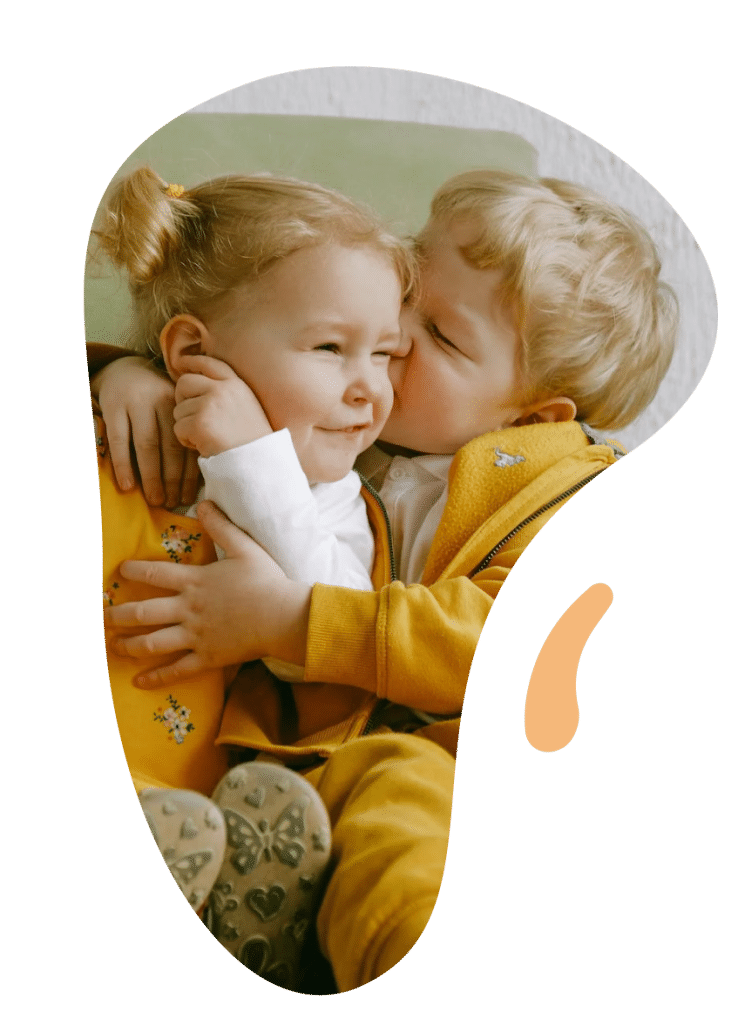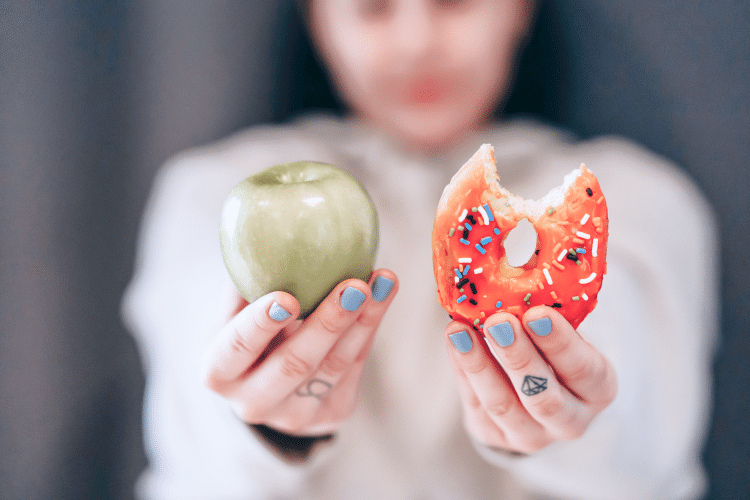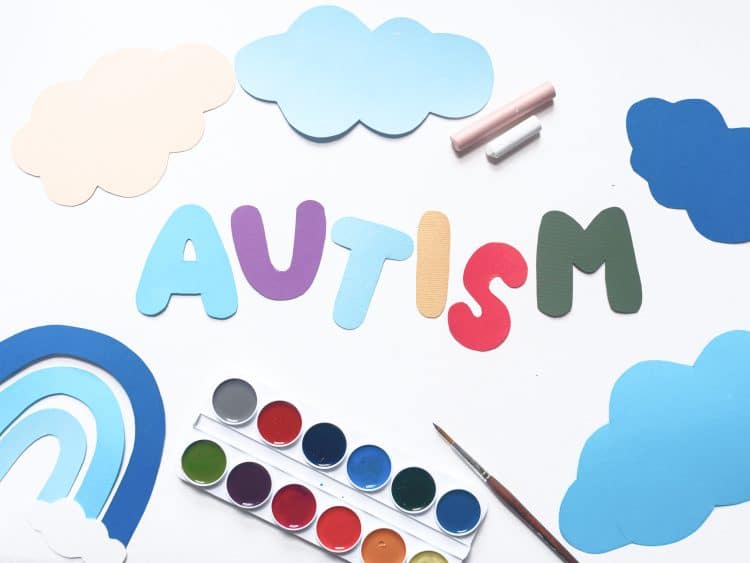Forming a Secure Attachment to Your Siblings

Published on December 16, 2022 Updated on April 6, 2023
Sibling relationships are like no other. One minute you’re thick as thieves; the next, you’re at each other’s throats. It’s normal for siblings to annoy each other, argue, and experience jealousy, hostility, and resentment toward one another – but does attachment theory affect this relationship?
Unfortunately, significant fallouts from childhood can continue into adulthood and affect the closeness between siblings. This is especially the case if these individuals experienced insecure attachment with their primary caregiver as children.
It’s reassuring to know that sibling relationships don’t have to be strained forever. It’s possible to form a more secure attachment with your siblings at any stage of life.
To help answer any questions you may have on creating a secure attachment bond with your siblings, this article will cover:
- How insecure attachment can affect sibling relationships
- Ways insecure early attachment can lead to stronger sibling bonds
- Effect of temperament on sibling relationships
- A description of birth order’s impact on sibling relationships
- How culture can influence relationships between siblings
- The actions to take to form a secure attachment with your siblings
Can Insecure Attachment Affect Sibling Relationships?

Insecure attachment to the primary caregiver affects every relationship moving forward, including those with siblings. However, while early insecure attachment can certainly harm sibling relationships, it can also encourage them to grow and flourish.
It’s important to know that there are ways to alter your attachment style and subsequently experience relationships differently, not just with your siblings but in all your relationships. We will discuss how to create secure bonds with your siblings later in the article.
If you would like to understand more about how your attachment style can affect your relationships, take the free attachment styles quiz on our website to receive your report.
How Insecure Early Attachment Harms Sibling Relationships
Attachment to the primary caregiver has a big impact on an infant’s other relationships, including with friends, family members, and, eventually, romantic partners. Evidence finds that you have a 75% likelihood of developing insecure relationships with others if you were insecurely attached to your primary caregiver as a child.
Sibling relationships follow a similar pattern. A secure connection with your primary caregiver may make you more likely to experience secure sibling relationships. In contrast, insecure early attachment can lead to insecure sibling relationships, which may increase sibling conflict.
However, the early caregiver attachment bond may affect sibling relationships less than others. Just over half (56%) of sibling relationships appear to mimic the primary caregiver-child attachment bond – which, considering the physical proximity of siblings, is relatively low.
Insecure Early Relationships Can Strengthen Sibling Attachment
Sibling relationships may protect us against the harmful effects of early insecure attachment. Studies looking at attachment relationships between siblings found that older siblings can act as a secure base for younger siblings, giving them the confidence to explore their surroundings – similar to how secure caregiver-child relationships would. Comforting sibling relationships like this can give younger siblings a sense of how to relate to and communicate with others. Potentially even making up for anything missed in the caregiver-child attachment.
When siblings feel warmth and protection towards one another, this can act as a buffer against painful life events, such as parental separation or family death. This sense of protection (and of being protected) extends beyond the home environment and may help children develop healthy coping strategies to manage difficulties in school and with friends.
When children develop these healthy behaviors, they’re more likely to share their concerns with others rather than keep their thoughts and feelings inside. Children using healthy coping strategies may also be less likely to use tactics like physical aggression, bullying, theft, and defiance to manage difficult emotions.
What Other Factors Affect Sibling Attachment?
Although evidence suggests the caregiver-child relationship does affect sibling attachment, it’s not the only factor at play. Individual temperament, birth order, and culture also appear to affect the closeness between siblings.
Temperament
Children who have big emotional outbursts and are highly active are often labeled as having a “difficult temperament.” These children may be more likely to get into sibling rivalries and conflicts. Also, if these children are the firstborn, they might struggle to welcome their younger siblings into the family.
In contrast, older siblings who appear sensitive, trustworthy, and warm are more likely to be seen by their younger siblings as positive attachment figures. These attributes can also provide young children with a healthy template to model their actions on in future relationships.
However, the impact of temperament on sibling relationships doesn’t really seem to take hold until early adolescence. Evidence suggests that the detrimental effect of having a “difficult temperament” grows as children get older, meaning that conflicts between siblings may become more frequent as they reach adolescence.

Birth Order
According to Birth Order Theory, an idea proposed by researcher Alfred Adler, the order in which children are born shapes their personalities and behaviors. Personality is closely linked to temperament, suggesting that birth order may also influence sibling relationships.
For example, older children may feel betrayed by their caregivers when they have another child. They may initially react by directing their anger toward their caregivers, but this anger can eventually turn toward their younger siblings. What’s more, feelings of resentment, jealousy, and competition could lead to even more sibling rivalry and conflict.
However, such feelings appear to be most potent when the gap between siblings is three years or less, whereas a larger gap means younger siblings are more likely to see their older brother or sister as an attachment figure.
Culture
The role that siblings play within families often depends on their culture. Take the Western culture – we often consider sibling relationships as less important than caregiver-child and romantic relationships. In industrialized societies like the US, keeping in contact with your siblings once you become an adult is optional.
Contrastingly, in some non-Western cultures, it’s an obligation to maintain a close relationship with your brothers and siblings. In India, the festival Raksha Bandhan specifically celebrates the brother-sister relationship.
Therefore, you may be less likely to share a close bond with your siblings if born into a Westernized culture than a non-Western one. But if you do share a close bond with a sibling, it’s nice to know that you both do so out of choice.
How to Form a Secure Attachment With Your Siblings
There’s always time to transform an insecure attachment with your siblings into a secure relationship. Creating a secure attachment to a sibling involves spending time together, finding similarities, making them feel significant, showing warmth and love, and getting to know them.
1. Spend Time Together
A big part of secure attachment is physical proximity. Touch, taste, smell, sight, and sound are the first steps we take to feel close to our primary caregivers.
Evidence demonstrates that we never lose this pull towards physical proximity, especially when it comes to people we feel psychologically close to, like our family, friends, and even strangers who belong to the same groups as us.
The Proximity Principle, developed by social psychologists, suggests that we are more likely to form close relationships with people with whom we share a physical environment. According to this idea, students who sit beside one another are more likely to become friends, coworkers may be more likely to form romantic connections, and siblings who spend time together will likely form a secure attachment.
2. Find Similarities
We try to find similarities in others right from toddlerhood as a way to feel close to them. To do so, during toddlerhood, we use imitation. Then we go on to develop language and culture in an effort to be similar to others.
According to researchers Kerchoff and Davies’ Filter Theory, we search for similarities everywhere we go to find people like us in terms of sociodemographic characteristics, beliefs, and attitudes. Evidence demonstrates that similarities can encourage open communication and understanding and lessen conflicts and disagreements.
The importance of finding similarities with others suggests that feeling similar to your siblings can be a powerful tool to feel safe and secure in your relationship. However, finding similarities may be easier to say than do – you may have different personalities, approaches to life, and morals. If you and your siblings are very different, start with the small things, such as your favorite food, movie, or childhood holiday.
3. Make Them Feel Significant
You can form closeness and connection with your siblings by making them feel like they matter to you. Feeling significant is a natural human desire and involves feeling noticed, needed, and important.

Studies show that feeling like you matter can improve self-worth and motivation and lessen the risk of anxiety and depression.
You can make your siblings feel significant by:
- Telling them they’re important to you
- Complimenting them
- Making kind gestures (such as thoughtful gifts and surprises)
- Putting in time and effort to see and speak to them
- Listening to their problems
- Showing an interest in their life
- Being supportive
- Opening up about your difficulties
However, feeling significant to others can also make us feel vulnerable, as it opens us up to getting hurt if we fall out of their favor. If, at some point, they’re too busy to speak to or see us, or we do something they dislike, we may be hit with feelings of shame and inadequacy.
Furthermore, emotional vulnerability can be especially tough for people with an avoidant attachment style, as they may struggle to let you into their inner world because of their early experiences. If you have a sibling with avoidant traits and they resist your attempts to make them feel significant, don’t take offense. They may feel like it is an attack on their independence rather than an effort to build a secure bond. In this instance, continually providing support and showing them their significance to you can help them achieve earned security.
4. Show Your Sibling Warmth and Love
affectionate feelings help us to feel safe, supported, and good enough to receive love. When we receive these feelings from other people, they give us the freedom to be happy and confident in this person’s presence. It also makes conflict and anger more bearable.
However, similarly to feeling significant, receiving warmth and love from someone can feel like a double-edged sword, as these sensations trigger feel-good hormones when they’re present. Yet, they can also make us feel vulnerable and unlovable and damage our self-esteem if the relationship hits any road bumps.
If you offer your sibling warmth and love, ensure that you’re patient and consistent in your offerings. Their difficult early experiences could initially block them from accepting your attempts at warmth and love. However, this can ease with time, consistency, and ongoing support.
5. Get to Know Them
According to psychologist Gordon Neufeld, “to feel close to someone is to be known by them.” Getting to know your siblings as a way of forming a secure attachment with them is similar to sharing physical proximity. However, getting to know them also involves letting them into your psychological rather than physical world.
We often get to know people by sharing information about ourselves. This phenomenon starts in childhood with secrets – children often tell their parents the truth about something for fear that keeping secrets will impact their closeness. Secret sharing continues as we develop, becoming more focused on peer relationships through adolescence and romantic relationships in adulthood.
Getting to know your siblings by sharing information about yourself, and allowing them to share with you without judgment, provides opportunities to be vulnerable and experiment with trusting each other.
Final Note on Creating a Secure Attachment With Siblings
Arguments, fights, and quibbles are normal in sibling relationships, especially during childhood. However, if you form an insecure attachment with your siblings, these conflicts are more likely to continue through adulthood.
Not getting along with a sibling in adulthood can leave a gap in our life. So, it’s comforting to know that we can still form a secure attachment with our siblings, even if our early relationships were insecure.
Through physical and psychological proximity, finding similarities, showing warmth and love, and making them feel significant, there’s a good chance you can form a secure attachment bond with your siblings. And, in the process, achieve earned security for yourself and your sibling.

References
Brody, G. H., Stoneman, Z., & McCoy, J. K. (1994). Contributions of family relationships and child temperaments to longitudinal variations in sibling relationship quality and sibling relationship styles. Journal of Family Psychology, 8(3), 274–286. Conger, K. J., Stocker, C., & McGuire, S. (2009). Sibling socialization: The effects of stressful life events and experiences. New Directions for Child and Adolescent Development (126), 45–59. Fitzpatrick, J. (2016). Filter Theory. Encyclopedia of Family Studies, 1–3. Fuller, E. (2019). Influences on the Sibling Relationship: The Relationship Between Attachment Style and the Sibling Relationship, and the Moderating Effect of Living in a Household With an Ill Child (Order No. 13877813). Available from ProQuest Dissertations & Theses A&I. (2240007676). https://ezp.lib.cam.ac.uk/login?url=https://www.proquest.com/dissertations-theses/influences-on-sibling-relationship-between/docview/2240007676/se-2 JRank Articles. (n.d.). Sibling Relationships - Siblings In Non-western Cultures. https://family.jrank.org/pages/1563/Sibling-Relationships-Siblings-in-Non-Western-Cultures.html#ixzz7nQaNnhu6 Leman, K. (2009). The New Birth Order Book: Why You Are the Way You Are. Baker Publishing Group. Menesini, E., Camodeca, M., & Nocentini, A. (2010). Bullying among siblings: The role of personality and relational variables. British Journal of Developmental Psychology, 28(4), 921–939. Meunier, J. C., Roskam, I., Stievenart, M., van de Moortele, G., Browne, D. T., & Kumar, A. (2011). Externalizing behavior trajectories: The role of parenting, sibling relationships and child personality. Journal of Applied Developmental Psychology, 32(1), 20–33. Neufeld, G. (2006). Hold on to Your Kids: Why Parents Need to Matter More Than Peers. Balantine. Qian, G., Chen, X., Jiang, S., Guo, X., Tian, L., & Dou, G. (2020). Temperament and sibling relationships: The mediating effect of social competence and behavior. Current Psychology, 41(9), 6147–6153. The BIG Language Team (2020, April 9). Sibling Relationships Around the World. Big Language Solutions. https://biglanguage.com/blog/sibling-relationships-around-the-world/ Toman, W. (1992). Family Constellation: Its Effects on Personality and Social Behavior. Springer Publishing Company. Van Valkom, M., Guerguis, A. J., & Kramer, A. (2017). Sibling Relationships, Birth Order, and Personality among Emerging Adults. Journal of Psychology and Behavioral Science, 5(2). van IJzendoorn, M. H. (1995). Adult attachment representations, parental responsiveness, and infant attachment: A meta-analysis on the predictive validity of the Adult Attachment Interview. Psychological Bulletin, 117(3), 387–403. van IJzendoorn, M. H., Moran, G., Belsky, J., Pederson, D., Bakermans-Kranenburg, M. J., & Kneppers, K. (2000). The Similarity of Siblings’ Attachments to Their Mother. Child Development, 71(4), 1086–1098.











 Get mental health tips straight to your inbox
Get mental health tips straight to your inbox








